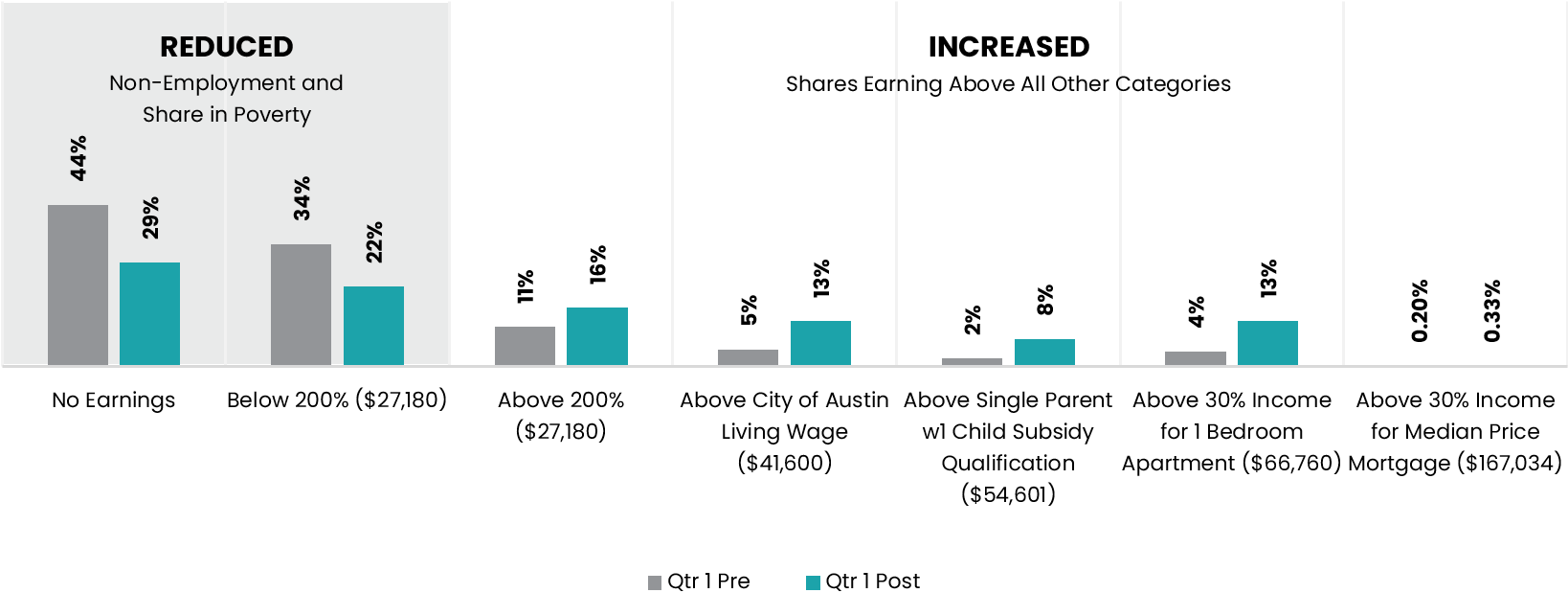
Annual Report 2023
How Austin’s Hire Local Plan data and Workforce Solutions Capital Area’s performance proves training and wraparound services are an intermediary to affordability.
i
Contents
01
From Our Leaders

Tamara Atkinson
CEO
It was an honor to help launch Hire Local and experience the difference it made for thousands of Austinites. Every job filled or training completed represents a life changed, a family supported and a community uplifted.”

Melanie Flowers
Immediate Past Board Chair

Mark Sherry
Board Chair
02
Hire Local History
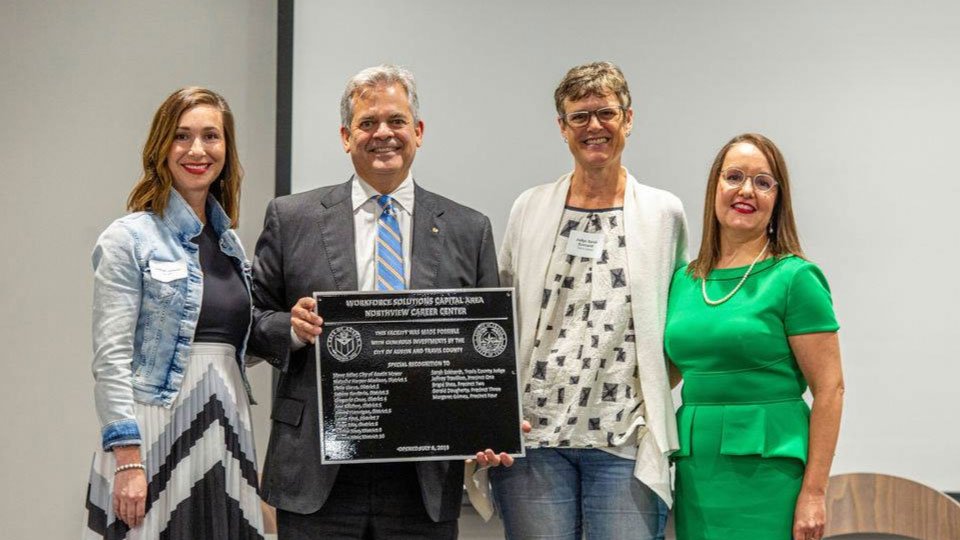
Launched Austin Metro Area Community Workforce Plan

Conducted community engagement sessions to shape next plan
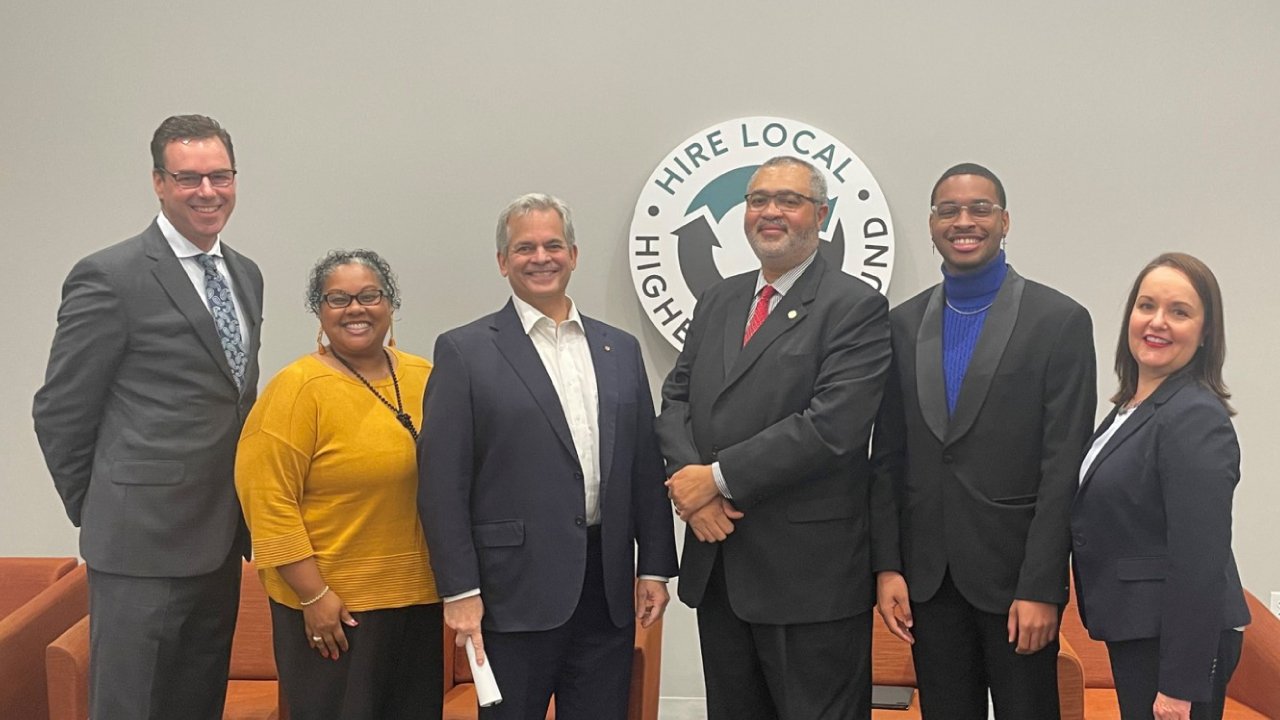
Launched Austin's Hire Local Plan
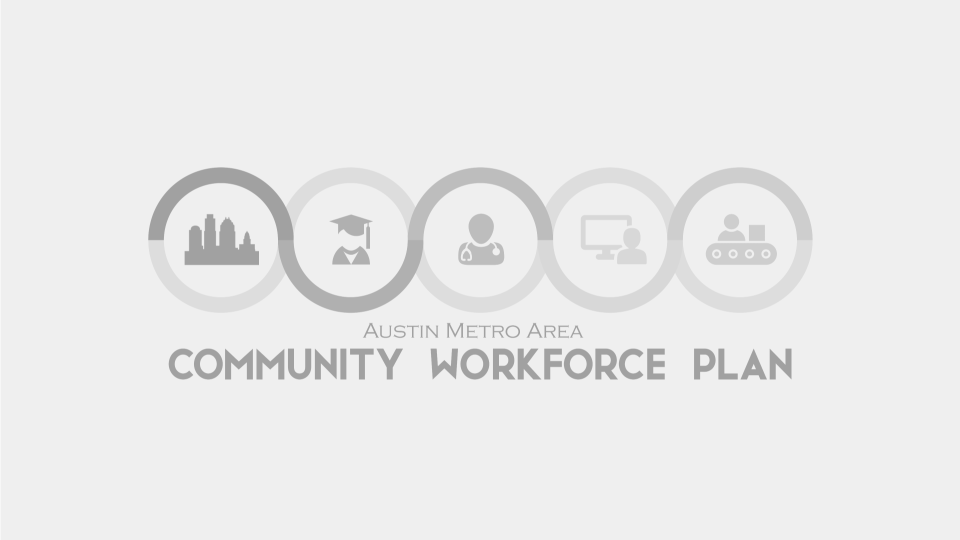
Final year analysis for Community Workforce Plan completed
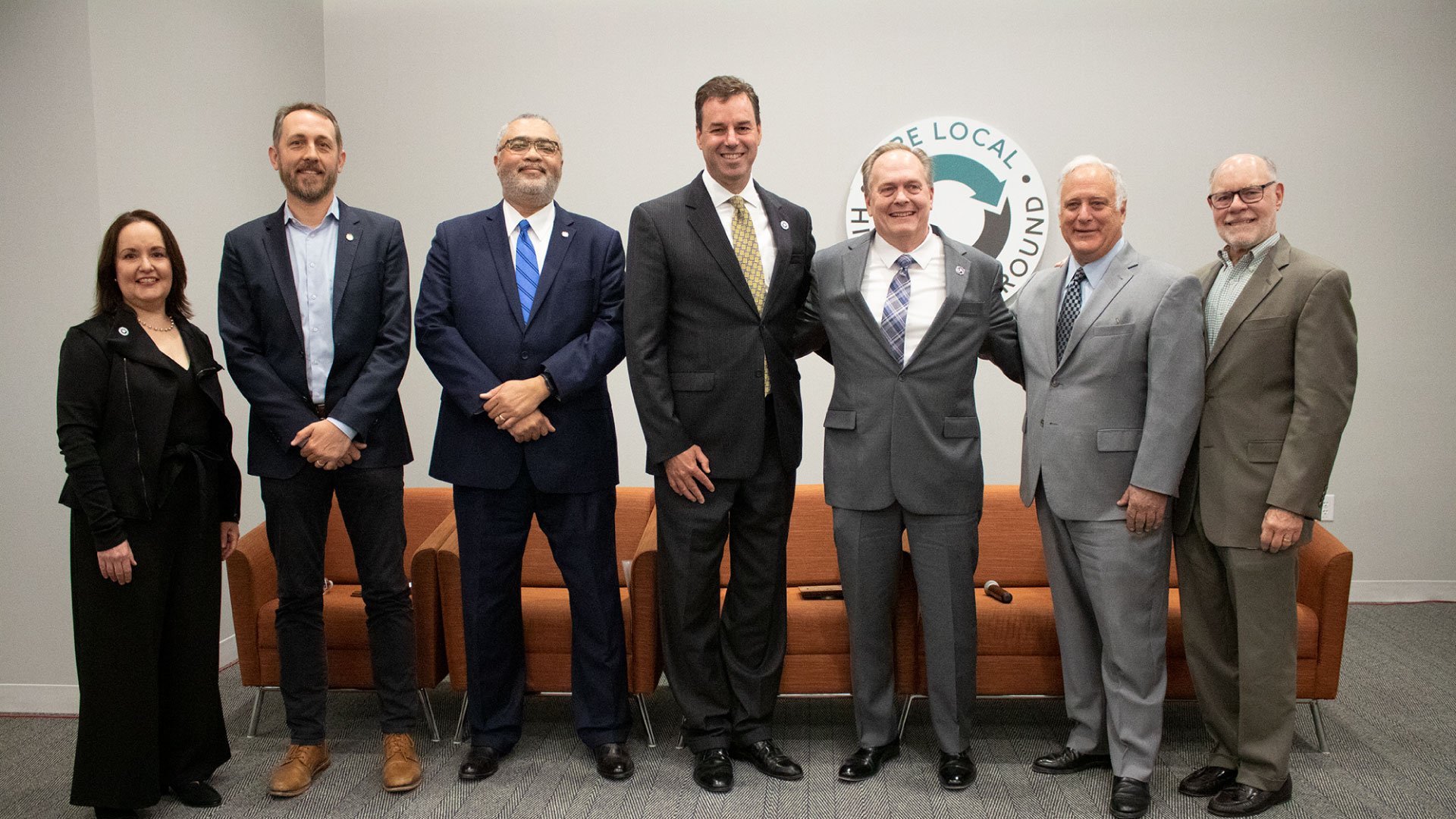
Adopted Mobility + Infrastructure as Newest Target Industry

First analysis of the Hire Local Plan completed
03
Hire Local Year 1:
Training and Wage Impacts
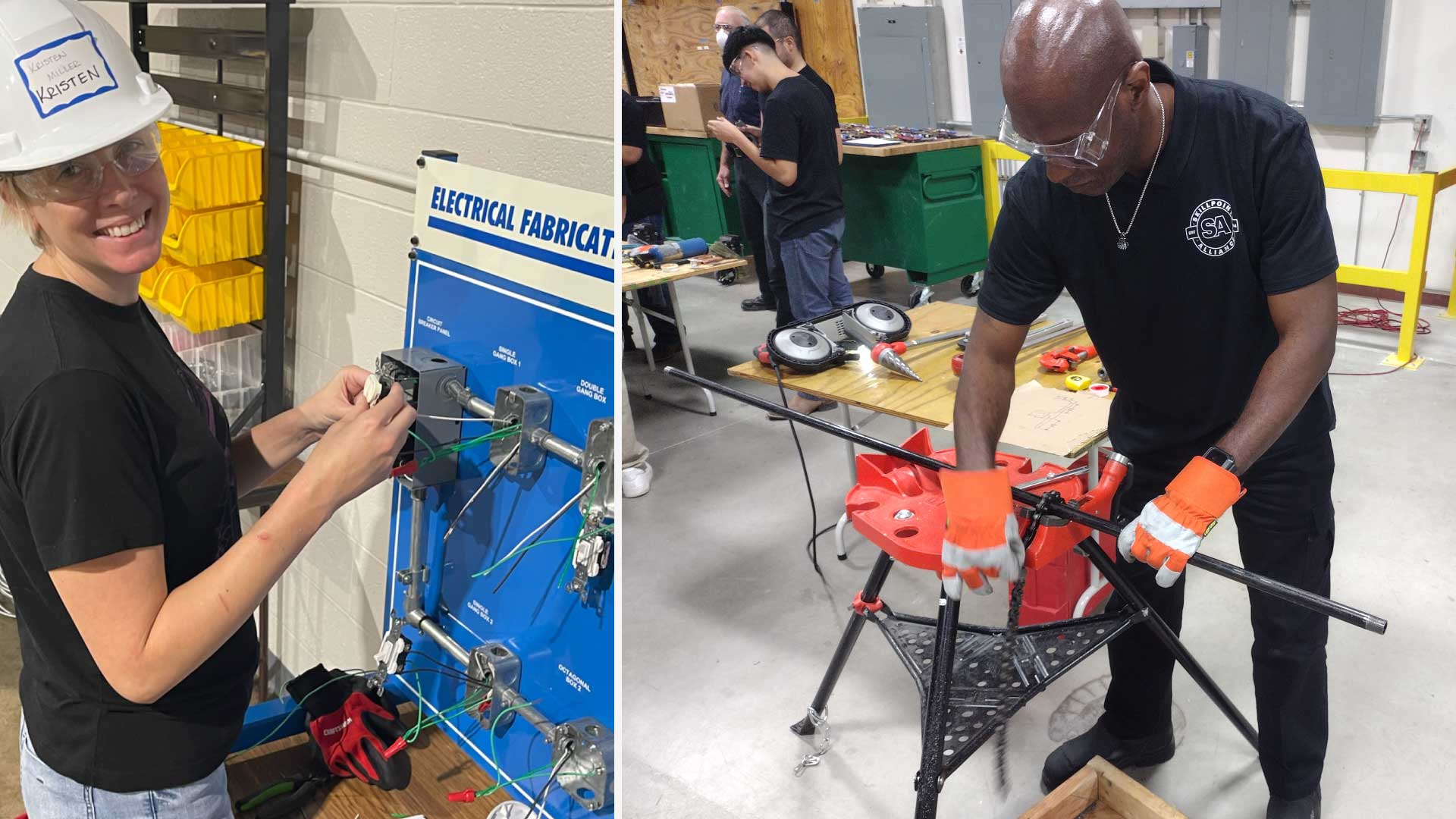
Workforce Solutions Capital Area partners with Skillpoint Alliance to fund students in their electrical, HVAC, plumbing, and certified production technician (manufacturing) programs, which have completion rates above 90%.
About Hire Local
The Hire Local evaluation seeks to understand whether the size and efficacy of the training and completion pipeline meets the region’s needs, and, given the high cost of housing and living, whether those who complete local workforce training and education programs find employment that allows them to live nearby.
This data provides information on workforce education and training enrollment, completion, employment, and earnings intended to begin the process of tracking and understanding the local workforce pipeline. New measurement tools intend to provide a more accurate portrayal of the impact of the workforce system, including change in income, which measures the share of employed completers who experienced an increase in earnings, and earnings distribution, which looks at earnings thresholds beyond poverty (e.g., whether individuals earn enough to afford the rent for a local one-bedroom apartment) to more accurately measure participant perception of program success.
We track wage and employment outcomes a full year after training completion for the most complete ROI and training outcomes.
Workforce Solutions Capital Area regularly analyzes the regional labor market, looking for industry and occupational trends. Based on our analysis, we have identified the most in-demand industries and occupations, which guides the investment of workforce program funds for training.
Enrollment
KEY FINDINGS
14,870 residents enrolled in focus industry training and education programs. Nearly half were younger than 21. A near equal share entered skilled trades/manufacturing, healthcare, and business programs, and slightly less entered IT programs.
DEMOGRAPHICS
ENROLLMENT BY INDUSTRY
Completion & Employment
KEY FINDINGS
4,548 Austin metro residents completed training. Of them, 71% found employment in a training-related field within the first quarter post-completion, up two points from last year.
EMPLOYMENT RATES BY INDUSTRY
Increased Income
KEY FINDINGS
Of Austin’s training completers who found employment, nearly all (85%) experienced an increase in their income in the first quarter post-completion compared to their average quarterly earnings the year prior to enrolling. For those who found employment, their post-program wages increased more than 254%.
MEDIAN QUARTERLY EARNINGS INCREASE FOR EMPLOYED COMPLETERS
MEDIAN QUARTERLY EARNINGS INCREASE FOR EMPLOYED COMPLETERS, BY INDUSTRY
While earnings for employed healthcare workers are the lowest across sectors, completing participants in those programs actually received the highest change in income compared to their pre-program earnings, making $2,105 more (a 335% increase) once they completed training and found employment.
Reducing Poverty
KEY FINDINGS
Rather than focus on a single measure of income to determine success, the Hire Local evaluation considers multiple earnings categories to provide a clearer portrait of the success and Austin-area affordability. There is significant evidence that the region’s workforce system as measured by Hire Local is moving in the right direction.
HIGHLIGHTS
04
Beyond Training:
Workforce Solutions Capital Area Impacts
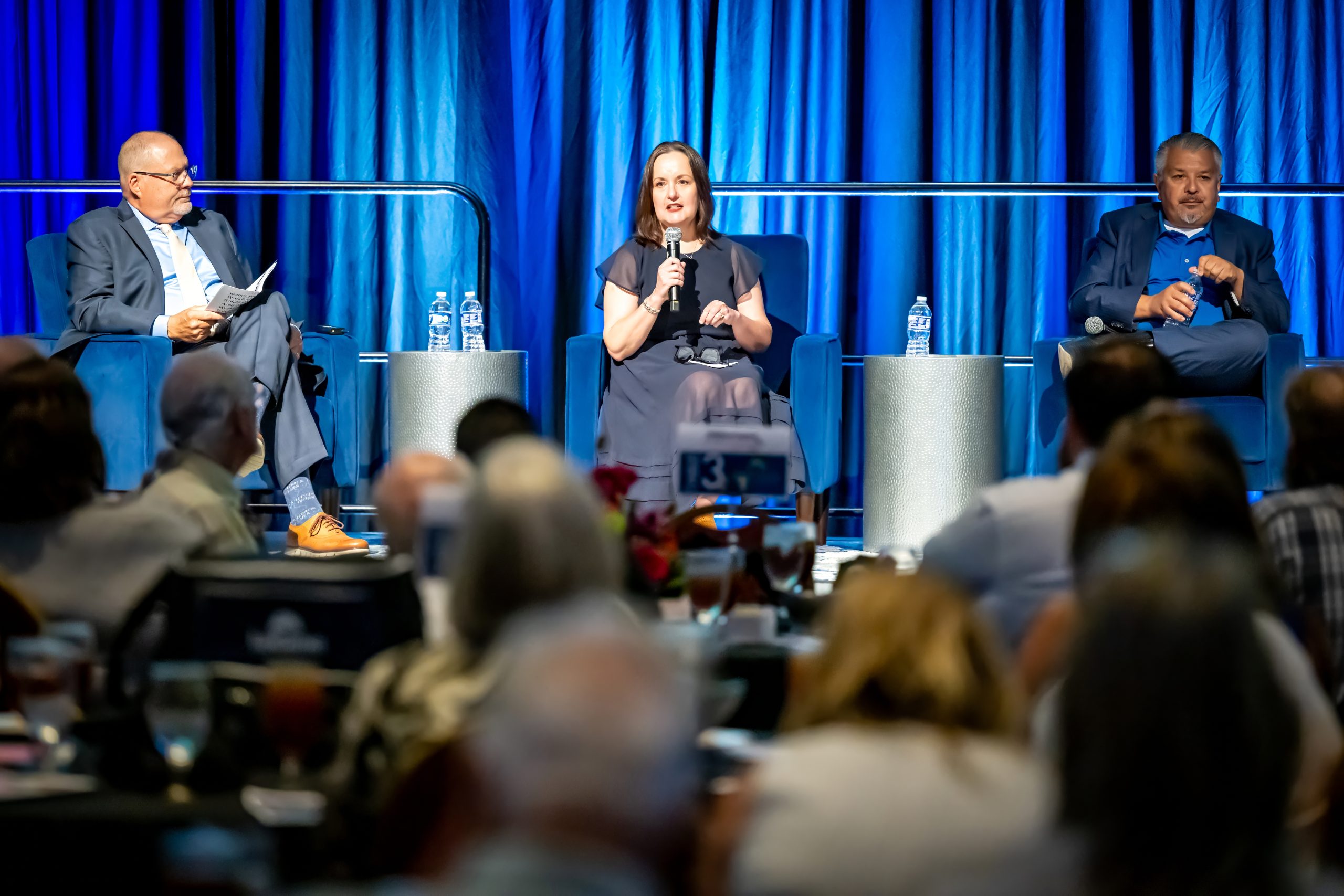
About Us
We connect local people to local jobs in a variety of ways aside from training. This includes K-12 career education and outreach, tailored business solutions and convening employer-led sector partnerships, and child care scholarships and child care quality improvement initiatives, and many others.
Awareness & Enrollment
Workforce Solutions Capital Area has built a robust pathway for high school graduates to enter in-demand training and education programs through our K-12 efforts.
17,186
Students served
with career activities in and out of the classroom such as career exploration events, field trips to industry work sites, summer internships and more
5
ISD partners
Austin, Del Valle, Elgin, Manor & Pflugerville
36
Campuses supported
114
Educators participated in annual Teacher Externship Program
alongside 39 employers, leading to industry-led lesson plans to support students in developing academic and technical skills required for the workforce
HIGHLIGHT
CareerQuest 2023
Workforce Solutions Capital Area and Education Service Center Region 13 hosted 1,800 bright minds from Austin, Del Valle, Elgin, Manor, and Pflugerville ISDs to explore the endless career possibilities of Austin’s hot job market in tech, healthcare, manufacturing, skilled trades, and mobility + infrastructure.
Job Placement
Our tailored solutions at various levels of support assist employers with awareness-raising, training, placement, and upskilling
7,614
Employers served
82
Hiring events
5,531 job seekers & 1,002 employers attended
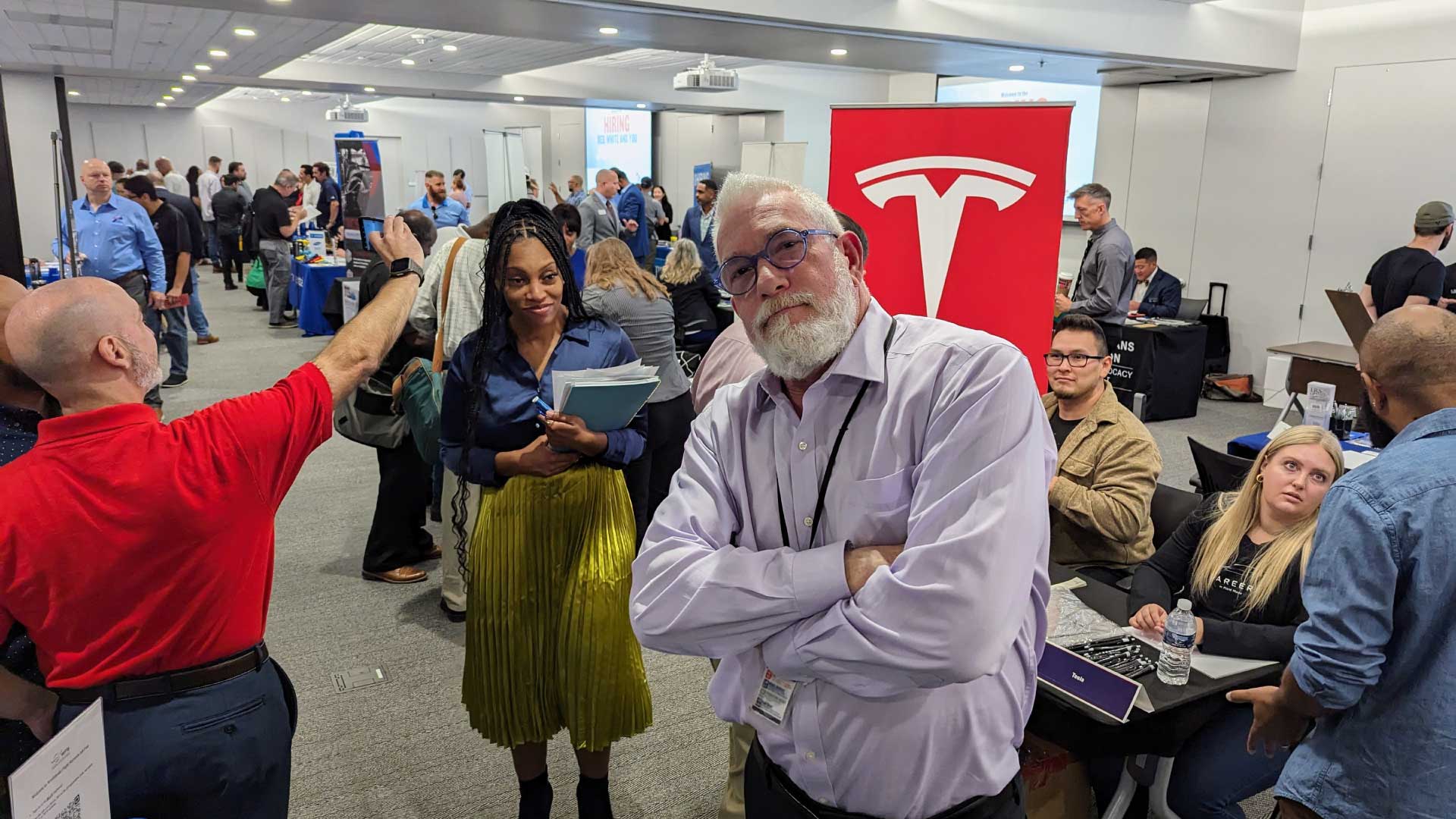
HIGHLIGHT
Hiring Red, White, & You!
We participated in the statewide Hiring Red, White, and You! hiring event series, connecting veterans, transitioning military, and military spouses with Texas employers. Workforce Solutions boards across the state host events in partnership with the Governor’s Office, Texas Veterans Commission, and Texas Medical Center.
Upskilling
We assist frontline workers in acquiring skills to advance into higher-paying mid- and upper-level jobs
$192K
Invested in upskilling in Central Texas
through partnerships with employers to get new workers certified on the job or experienced workers trained for higher level roles within their companies
7
Registered apprenticeship programs supported
4 in healthcare, 2 in adv. manufacturing, 1 in information technology

HIGHLIGHT
Nursing Grads Are Increasing Each Year
Through our healthcare industry sector partnership, the Central Texas Healthcare Partnership (CTHP), Austin has taken a community approach to addressing the nursing workforce shortage. Through combined efforts, Austin has almost doubled the number of nursing graduates in the last five years, with a continued rise expected.
Child Care Services
We promote positive child outcomes
$14,615
Average annual wage increase of parents receiving child care assistance post-program exit
5,613
Children received child care scholarships*
435
Child care providers contracted
34
Providers raised to higher Texas Rising Star quality rating
4,902 providers and teachers trained/mentored
350
Children enrolled in Continuity of Care program
Funded by City of Austin / Travis County to bridge any gaps in eligibility for local parents
444
Jeanette Watson Wage Supplement recipients
Helps early childhood professionals continue to work in a field where wages are not commensurate with other skilled positions
$466K
Worth of books and equipment donated to providers
196 providers received donations to increase the quality of education
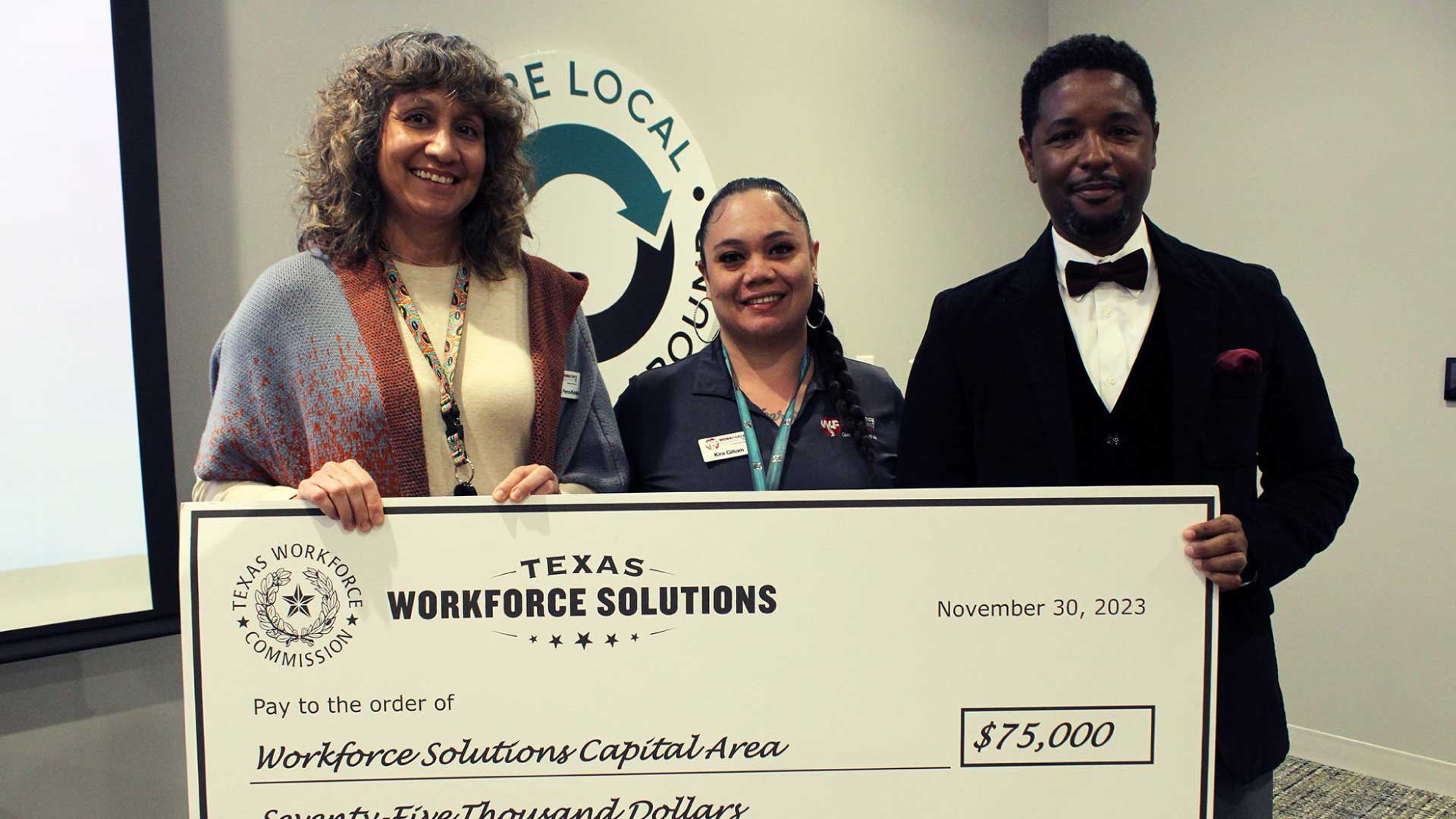
HIGHLIGHT
2023 Child Care Employment Connections Award
We were honored to be recognized by the Texas Workforce Commission for our critical support to help Austin-Travis County parents. This performance-based award recognizes local workforce development boards for their work in connecting at-risk parents with sufficient employment.
* Data has been updated due to changes in our methodology to ensure the most accurate, reliable information.
05
Top 10 Workforce Moments of 2023
2023 was a monumental year for our local workforce and Workforce Solutions Capital Area! Looking ahead, our goal is to continue making a positive difference in the lives of job seekers and employers.



